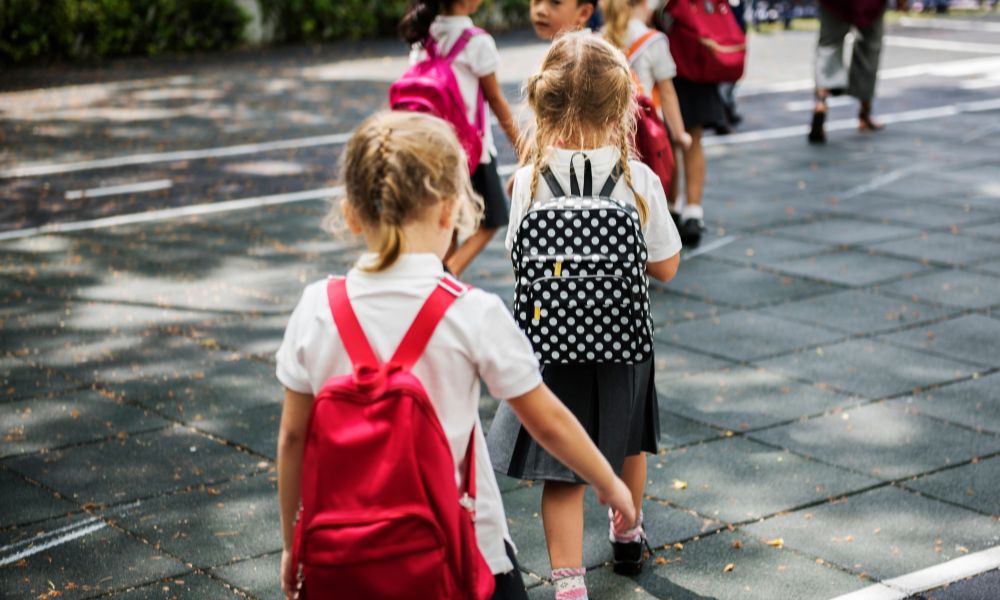
The debate over school funding is heating up, with sharp divisions over whether private schools get more than their fair share.
Independent Schools Australia (ISA) says claims of overfunding are misleading, arguing private school students receive far less government funding than their public school peers. But the Greens say billions in taxpayer dollars flow to elite schools while most public schools remain underfunded.
On 27 February, Independent Schools Australia (ISA) launched its ‘School Choice Counts’ campaign in a bid to dispel what it calls “misleading rhetoric used to pit school sectors constantly pitted against each other” and help the public understand how Australian schools are funded.
The initiative includes a campaign toolkit being distributed to over 1,216 schools, and “a clear case for fair, sustainable funding” to ensure that “all sides of politics hear the voices” of 716,000 students and their families.”
“Unfortunately, funding is complex, and some groups use that complexity to mislead and misinform,” ISA CEO, Graham Catt, told The Educator.
“On average, nationally, Independent school students receive $12,160 in government funding, compared to $22,510 for government school students. And because funding is effectively discounted based on the capacity of the parent body to contribute, high-fee schools get the least funding.”
Catt said this means parents contribute more, and less government support is provided to the school.
“The commonwealth provides 80% of funding to non-government schools and the states and territories fund 20%. For government schools that approach is reversed,” he said. “That's why the rhetoric some groups push that the Commonwealth "overfunding" non-government schools is so misleading.”
Catt said claims that private schools are overfunded is “a subjective view” of some commentators.
“It is ideology, not fact. A small number of Independent schools are transitioning down to their SRS level following the changes to the funding model. But they're not overfunded, they are funded to exactly the level agreed by governments,” he said.
“The reality is though, that most Independent schools charge fees less than $6000 per year, and families who choose them are everyday Australians. More than 60% come from low- and middle-income backgrounds.”
Catt said ISA’s ‘Our School Choice Counts’ campaign is “a grassroots movement.”
“It’s not driven by political operatives; it’s driven by parents, teachers, and school communities who refuse to be silent while politicians try to make their children’s education more expensive.”
School choice offers vital alternatives for students in need
There have been concerns that school choice might widen the achievement gap, particularly for disadvantaged students in underfunded public schools.
Currently, there are 157,000 students with disability in Independent schools, and 19,000 Aboriginal and Torres Strait Islander students. There are also more than 15,500 in the Independent special assistance schools serving those students who experience significant educational disadvantage.
Due to the growing number of students who are not able to attend mainstream schools, 2014 to 2022, enrolments nearly tripled, and the number of schools doubled.
“These schools offer a critical alternative to mainstream education, for students at risk of disengaging entirely with education. Around 10% of Independent schools charge no fees at all, or a nominal resource fee,” Catt said.
“Many of the high fee schools that critics focus on attacking offer scholarships, bursaries, many other programs to support disadvantaged students and families.”
Catt said school choice helps ensure that there are options, for all types of students with a diverse range of needs.
“That's why it is so important that we end the divisive rhetoric that aims to pit sectors against each other and focus on working together to deliver great outcomes for all students.”
Why school diversity matters: A principal’s perspective
Sophia Williams, principal at Bluegum Community School – a small community Independent School in the ACT – recently spoke at the launch of ISA’s national education campaign, held at Parliament House in Canberra.
“As a principal of an independent school, it's really important to me that we have the ability to be able to have diversity in education,” Williams said.
“There are all sorts of educational needs and all sorts of humans that need educating around the world and diversity in education gives us the space to be able to have different pedagogies and meet different needs.”
Williams pointed out that not all independent schools are high fee-paying schools and that some are low-cost, not-for-profit schools that showcase different approaches to education.
“I know, as a school principal that there are families within our community who choose and seek us because of our pedagogy, not because we're an independent school, not because we're a fee-paying school,” she said.
“They make their family finances work to be able to support their child the way that their child needs to be supported, and that's what we value about the Independent school system.”


